Calibrachoa: [Planting, Care, Irrigation, Substrate and Pests]
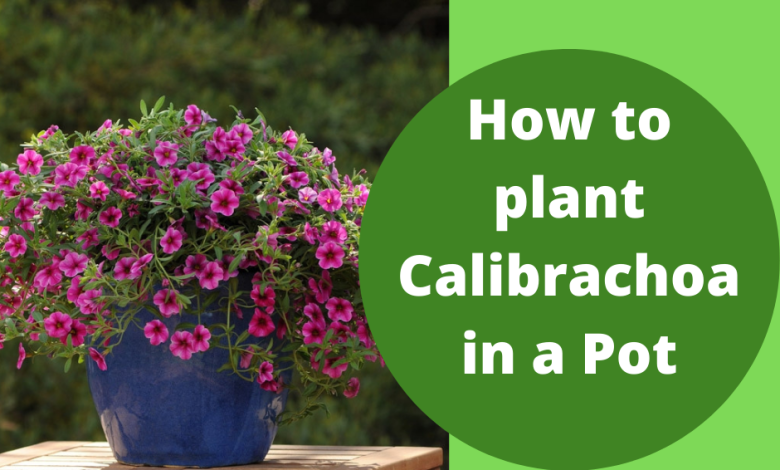
The Calibrachoa is a species of plant with a small size, but of great beauty that produces flowers of various colors, embellishing the place where it grows.
Due to its structure, many usually associate it with the petunia. However, they are two totally different species.
Having it at home will be a real pleasure because it has a very striking ornamental effect, either hanging or because of its creeping condition. In addition, it is capable of developing easily in wild land.
If you want to learn more about calibrachoa, you may have come to the right article
Important points when sowing Calibrachoa
- When? In spring.
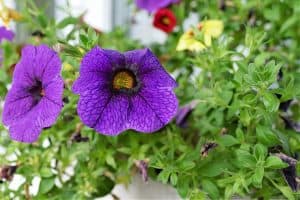
- Where? In a space that receives abundant sunlight, but protected from rain and wind.
- How do we prepare the land? With good quality organic matter rich in iron.
- How should we water? By focused action, without wetting flowers or leaves.
- How often do you have to water? Abundant. Whenever the land looks dry.
- What pests and diseases do they have? Very varied. They include mites, various types of fungi, mealybugs and aphids.
Characteristics of the Calibrachoa
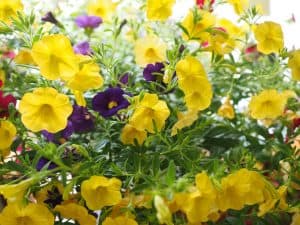 It is a plant belonging to the Solanaceae family, with perennial leaves and a height that does not exceed 20 centimeters. Its structure forms a fairly dense composition, creeping and with small green leaves.
It is a plant belonging to the Solanaceae family, with perennial leaves and a height that does not exceed 20 centimeters. Its structure forms a fairly dense composition, creeping and with small green leaves.
It produces flowers of various colors depending on the specific type in question. These are quite showy because they are trumpet shaped that open into petals, sometimes with a corolla and sometimes in duos.
The background of some flowers tends to be darker than the petals, adding even more striking contrast. In other cases, the background is a different color. For example, a flower with purple petals on a yellow background.
But one of the most striking aspects is that the flowers bloom in spring and remain until autumn, so you can enjoy them most of the year
Where should we plant the calibrachoa?
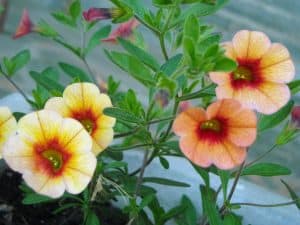 The Calibrachoa gets along very well with cold climates, but not with frost. In general, the temperature range that works well for it is from 18 to 25 º C.
The Calibrachoa gets along very well with cold climates, but not with frost. In general, the temperature range that works well for it is from 18 to 25 º C.
However, it needs plenty of sunlight.
Therefore, the ideal place will be one that offers semi-shade because it must also be protected from the rain.
The sun not only offers vitamins but also helps the colors to intensify more and the blooms to be much more abundant. In addition, the calibrachoa will be able to develop better by carrying out the photosynthesis process with greater efficiency.
Something very important: thewind does not support it. Therefore, it will need to be located as opposed to where it usually occurs.
The land must have very good drainage because it is a plant that needs frequent watering but if there is waterlogging, it could get sick.
As for the pH, a slight acidity will do very well.
When should calibrachoa be grown?
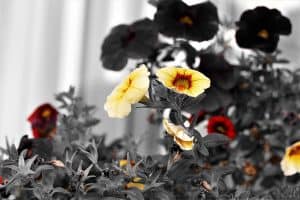 Calibrachoa needs mild temperatures to adapt to the outside, so it is preferable to grow it during spring.
Calibrachoa needs mild temperatures to adapt to the outside, so it is preferable to grow it during spring.
In fact, it is a plant that is grown in cycles in many places, because it cannot withstand winter temperatures that reach less than 5º C.
How do we prepare the land?
The land must be worked with enough organic content from which to take its nutrients.
For this reason, sufficient fertilizer must be incorporated before transplanting the sprouts.
In the event that it is a potted transplant, the use of universal substrate and a little vermiculite will give excellent results.
How to plant calibrachoa step by step?
The main reproduction system is with the use of seeds. However, these have two drawbacks: they are poorly pollinated and commercial sale is somewhat limited.
cultivation with seed
But in case you do get some seeds, the recommended procedure to make them thrive is through hot tray treatment.
- First you have to decide if you want to plant your calibrachoas in a pot or directly in the ground.
- In both cases, make a small hole several centimeters deep.
- Fill said hole with compost and water.
- Then, make the same hole again and deposit the seeds.
- Cover the calibrachoa seeds with soil and household organic matter such as compost. Don’t pack too much.
- Water lightly.
- Now it’s time to wait.
Cultivation by cutting
It is also possible to work through cuttings (which, depending on the aforementioned drawbacks of seeds, is the best option).
The correct way to do this is indoors, taking from the mother plant a stem without flowers, but that does have small buds. The stem should be at least 15 centimeters and since we do not want it to be damaged, it will be necessary to remove the leaves from the lower part.
This will prevent them from rubbing against the earth and moisture and ending up getting sick.
For the calibrachoas to grow correctly, the cutting must be offered a series of very specific care:
- Continuously moisten the substrate to hydrate the stem.
- Keep it in a warm place, not outside.
- Have a bright light source that penetrates a few hours a day. It could be placed near a window.
What care does the calibrachoa need?
Irrigation
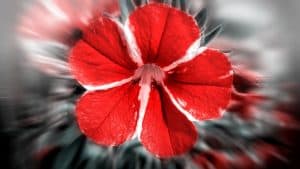 One of the main care that Calibrachoa needs is abundant watering but without flooding. The highest levels of humidity should be during growth, without getting its leaves and flowers wet.
One of the main care that Calibrachoa needs is abundant watering but without flooding. The highest levels of humidity should be during growth, without getting its leaves and flowers wet.
Therefore, if you have the calibrachoa planted in the ground, we strongly recommend the use of drip irrigation.
the fertilizer
The fertilizer is also essential and even more so that it is rich in iron, since it needs it to develop with strength.
A good way to apply it is with liquid fertilizers that are incorporated into the irrigation water. Although, keep an eye on this. It is delicate and you can kill other plants or the calibrachoa itself.
pruning
As for pruning, it is not necessary. The only need that might exist is in case of bad shoots or wilted parts.
Pruning could also be implemented to keep the branches in a certain space.
What pests and diseases does it have?
The Calibrachoa is very visited by pests and there are also a variety of diseases that can attack it through fungi.
pests
The main pests are known as spider mites, mealybugs and aphids.
Diseases
In the case of diseases, there is Fusarium, which is produced by a fungus due to excessive humidity.
Calibrachoa could also suffer from iron deficiency diseases, so it is very important to pay attention to this in subscribers.
Fill your garden with lots of color and brightness with these species that are capable of offering a truly natural composition without much effort.
Calibrachoa varieties
- Calibrachoa caesia (Sendtn.) Wijsman
- Calibrachoa calycina (Sendtn.) Wijsman
- Calibrachoa dusenii (REFr.) Stehmann & Semir
- Calibrachoa eglandulata Stehmann & Semir
- Calibrachoa elegans (Miers) Stehmann & Semir
- Calibrachoa ericaefolia (REFr.) Wijsman
- Calibrachoa excellens (REFr.) Wijsman
- Calibrachoa hassleriana (REFr.) Wijsman
- Calibrachoa heterophylla (Sendtn.) Wijsman
- Calibrachoa humilis (REFr.) Stehmann & Semir
- Calibrachoa linearis (Hook.) Wijsman
- Calibrachoa linoides (Sendtn.) Wijsman
- Calibrachoa macrodactylon (LBSm.& Downs) Wijsman
- Calibrachoa micrantha (REFr.) Stehmann & Semir
- Calibrachoa ovalifolia (Miers) Stehmann & Semir
- Calibrachoa paranensis (Dusen) Wijsman
- Calibrachoa parviflora (Juss.) D’Arcy
- Calibrachoa pygmaea (REFr.) Wijsman
- Calibrachoa regnellii (REFr.) Wijsman
- Calibrachoa rupestris (Dusen) Wijsman
- Calibrachoa sellowiana (Sendtn.) Wijsman
- Calibrachoa sendtneriana (REFr.) Stehmann & Semir
- Calibrachoa serrulata (LBSm.& Downs) Stehmann & Semir
- Calibrachoa spathulata (LBSm.& Downs) Stehmann & Semir
- Calibrachoa thymifolia (A.St.-Hil.) Stehmann & Semir

![Photo of [7] Varieties of Potatoes and their Characteristics](https://www.complete-gardening.com/wp-content/uploads/2022/08/7-varieties-of-potatoes-and-their-characteristics-390x220.jpg)

![Photo of Zahareña: [Cultivation, Care, Pests and Diseases]](https://www.complete-gardening.com/wp-content/uploads/2022/08/zaharena-cultivation-care-pests-and-diseases-390x220.jpg)
